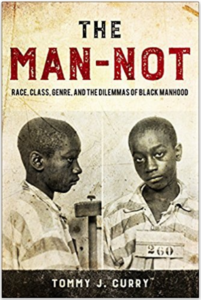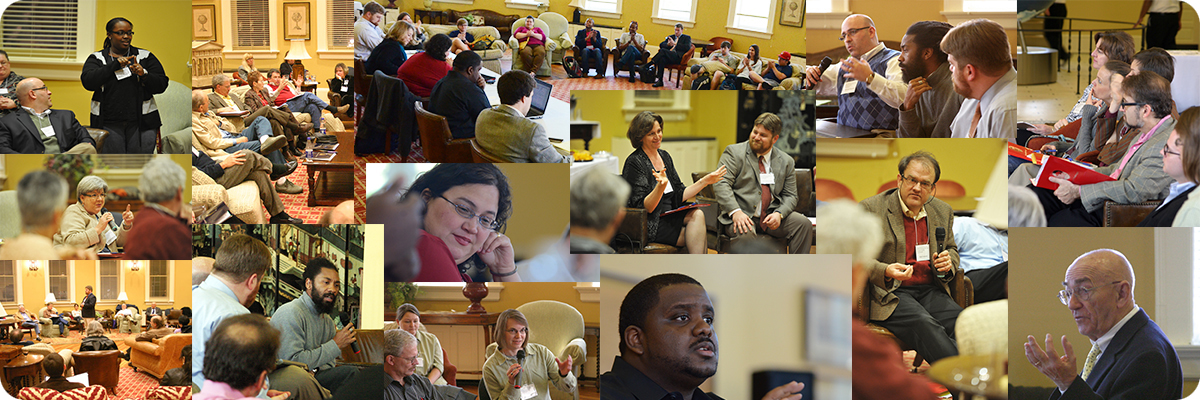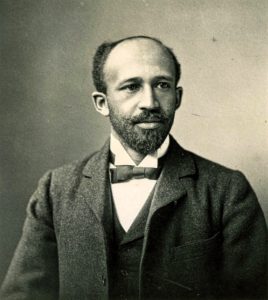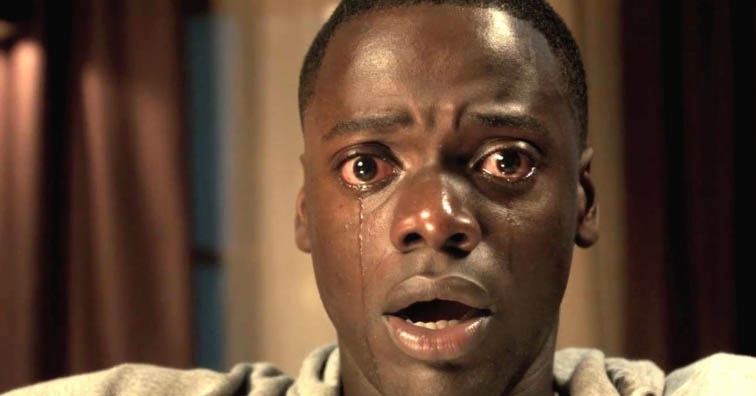| By Darrius Hills and Seth Vannatta |
The Negro is a sort of seventh son, born with a veil, and gifted with second-sight in this American world,—a world which yields him not true self-consciousness, but only lets him see himself through the revelation of the other world. It is a peculiar sensation, this double consciousness, this sense of always looking at one’s self through the eyes of others, of measuring one’s soul by the tape of a world that looks on in amused contempt and pity. One ever feels his twoness,—an American, a Negro; two souls, two thoughts, two unreconciled strivings; two warring ideals in one dark body, whose dogged strength alone keeps it from being torn asunder. ~ W. E. B. Du Bois [1]
The lust—the libidinal desire—for the Black male’s body that serves as the motivation behind his condemnation and death is not altogether new. ~ Tommy J. Curry [2]
Black male bodies are bodies under siege. In the current historical moment, one polemical, ethical issue is the deadly interplay between the surveillance of black bodies and a burgeoning militarized police state. There are several sources of this extended surveillance and scrutiny of black male bodies in American race relations. Studies in higher education and the psychology of race have illustrated how black boys are mischaracterized as older in appearance and more aggressive in demeanor than their white counterparts.[3] There is also substantive research on the impact that implicit racial bias has on black men and boys in terms of health and well-being, imbalances in the criminal justice system, and overarching social stigma in everyday life.[4] This mode of surveillance and sanctioning, as we illustrate, also extends into the practices of sexual victimization of black boys and men, an understudied but prominent feature of the life experiences of black male bodies in past and contemporary American culture. Assaults against black male personhood and embodiment reveal the extent to which the American context has distinguished its racial hierarchy through the ostracizing of blackness-as-non-white. Such a social habitus featuring this racialized “twoness” reveals how black people and black bodies are problem people and problem bodies—imposing upon blacks America’s anxiety about “racial others.” To this end, we are concerned with a philosophical exploration of the experience and configuration of black bodies in Jordan Peele’s Get Out (2017) in light of the insights from W.E.B. Du Bois and in light of gender theories on the historical and contemporary constructions of black male sexuality and identity.
Du Bois’s theory of double consciousness provides one component of the theoretical lens we use to analyze Peele’s film. We investigate double consciousness, black male embodiment, and racial appropriation through an examination of the film’s symbolism relating to each as they influence the central character, Chris Washington. Du Bois outlined the former concept in The Souls of Black Folk (1903), while the themes of racial appropriation, exploitation, and surveillance of black male bodies were inaugurated in the slave trade and continue in contemporary cultural and economic practices.

Curry captures the dual quality of fear of and desire for black male flesh in the notion of phallicism. Phallicism, notes Curry, invites, and further legitimizes societal suspicion and scorn, both in academic theory and in social institutions toward black men. Curry writes:
Phallicism refers to the condition by which males of a subordinated racialized or ethnicized group are simultaneously imagined to be a sexual threat and predatory, and libidinally constituted as sexually desirous by the fantasies or fetishes of the dominant racial group.[8]
Drawing upon the historical constructions of black manhood from slavery to Jim Crow and into the present, Curry presents phallicism as a frame for anti-black male sentiment and the resulting architecture of race and place imposed upon black male bodies. In a societal context in which all “male genitalia is conceptualized as a weapon wielded against women,” views of black men as problematic only bodies with a genetic and primordially-based proclivity for sexual violence are proffered as evidentiary support for the sanctioning, controlling, and killing of black men.[9] Here, black men are always already the rapists, the brutes, the savages, etc.; however, in this schema, black men also represent sexual desire. Because there is long historical precedent of black men (and women) being “hypersexualized as objects of desire, possession, and want,” another feature of black male experience that is under-examined involves the reality of sexual victimization of black men and boys.[10] In the great zeal to imagine black men as the always-already-hyper-rapist, the sexual vulnerability of black men as subordinate men trapped in a racial and sexual hierarchy that denies their personhood and agency goes unchecked.
Phallicism, then, as an accepted perspectival apprehension of and desire for black male embodiment, legitimates the use of coercion and control of the black male body as an only-body within the larger racial ecology of white male and female supremacy. Chris’s ordeal in Get Out creatively highlights that phallicism as a frame for misandry is a function of the collective white American psyche on black male bodies. Given the scope of Curry’s insights on this point, we argue, first, that Chris’s experience of double consciousness in the film discloses the white lust for the black male body concealed by the thin banalities of white liberal progressivism. Second, we show that Get Out illustrates Curry’s conclusion that Black men are treated as only problematic bodies in need of administrative control. Last, we demonstrate that Get Out highlights a yawning gap between the reality of white women as proxy patriarchs, culpable in advancing white supremacy, and the mythical view of them as both pure and passive non-participants.




